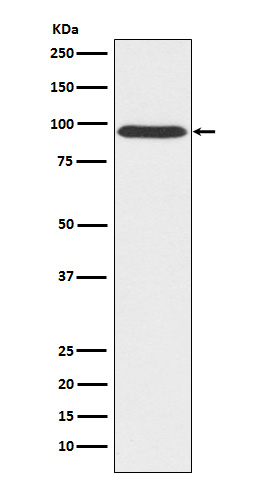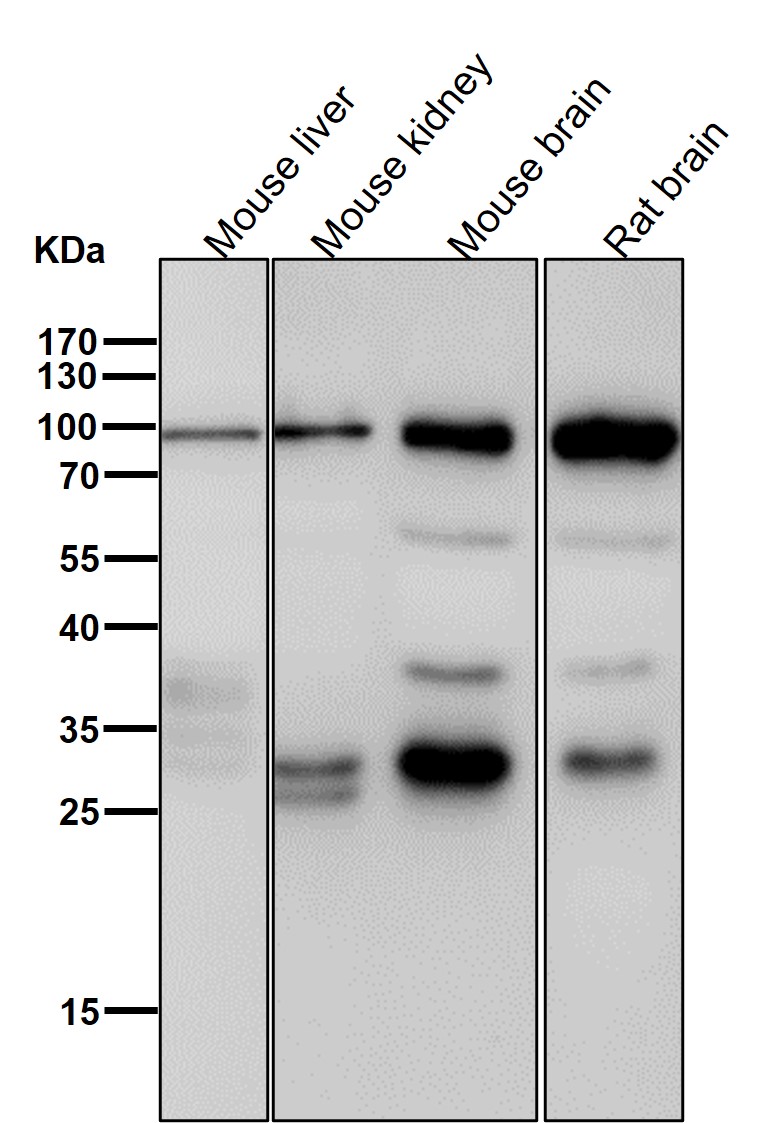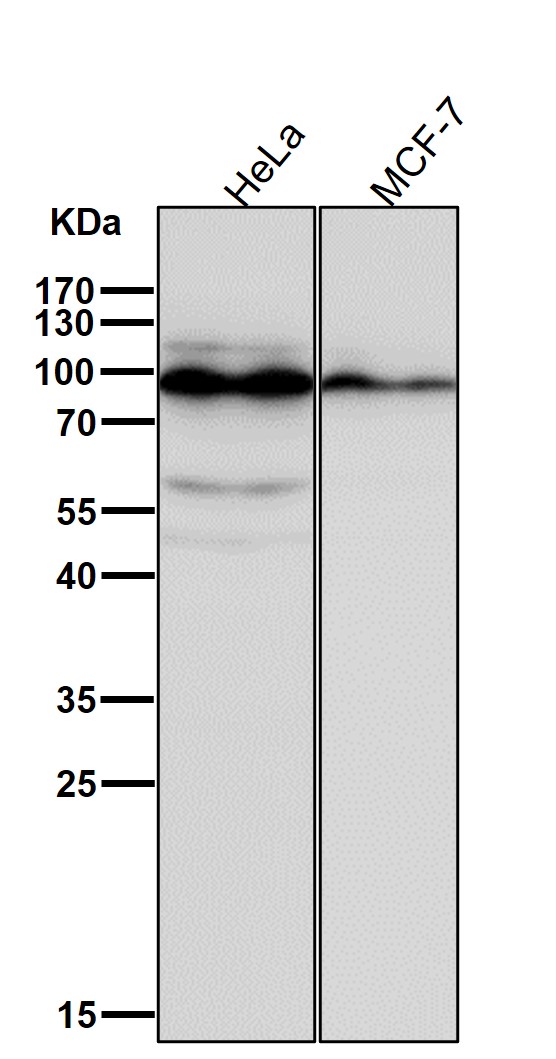


| WB | 咨询技术 | Human,Mouse,Rat |
| IF | 咨询技术 | Human,Mouse,Rat |
| IHC | IHC:1/100-1/200;IHF:1/50-1/200 | Human,Mouse,Rat |
| ICC | 1/50-1/200 | Human,Mouse,Rat |
| FCM | 咨询技术 | Human,Mouse,Rat |
| Elisa | 咨询技术 | Human,Mouse,Rat |
| Aliases | Domain E; Domain G; GEPH; GPH; GPHN; GPHRYN;;Gephyrin |
| WB Predicted band size | Calculated MW: 80 kDa ; Observed MW: 93 kDa |
| Host/Isotype | Rabbit IgG |
| Antibody Type | Primary antibody |
| Storage | Store at 4°C short term. Aliquot and store at -20°C long term. Avoid freeze/thaw cycles. |
| Species Reactivity | Human,Mouse,Rat |
| Immunogen | A synthesized peptide derived from human Gephyrin |
| Formulation | Purified antibody in PBS with 0.05% sodium azide,0.05% BSA and 50% glycerol. |
+ +
以下是3篇与Gephyrin抗体相关的经典文献摘要简述:
1. **"Gephyrin: a master regulator of neuronal inhibitory synapses"**
*Tyagarajan SK, Fritschy JM*
该研究综述了Gephyrin在抑制性突触中的核心作用,通过抗体染色揭示了其在突触后膜上聚集GlyR和GABA_A受体的分子机制,并探讨其磷酸化调控对突触可塑性的影响。
2. **"Monoclonal antibodies directed against Gephyrin disrupt synaptic inhibitory interactions in vitro"**
*Kirsch J, Betz H*
研究利用特异性单克隆抗体阻断Gephyrin功能,证明其对于甘氨酸受体(GlyR)在神经元突触的锚定至关重要,抗体干扰导致突触受体簇解体。
3. **"Altered expression of Gephyrin in Alzheimer’s disease models"**
*Maric HM, Mukherjee J et al.*
通过免疫印迹和免疫组化分析,发现阿尔茨海默病小鼠模型中Gephyrin蛋白水平显著下降,提示抑制性突触失调可能参与认知功能障碍的病理过程。
注:以上内容基于经典研究概括,实际文献需通过PubMed/Google Scholar检索确认具体细节。近年研究(如2020年后)可能涉及Gephyrin抗体在单分子成像或疾病生物标记物中的应用扩展。
Gephyrin is a pivotal postsynaptic scaffolding protein crucial for organizing inhibitory neurotransmission in the central nervous system. It anchors glycine receptors (GlyRs) and a subset of GABAA receptors at synaptic sites, ensuring the clustering and stability of these neurotransmitter receptors. Gephyrin's role extends beyond structural support; it participates in synaptic plasticity and modulates inhibitory signaling, impacting neural circuit function.
Gephyrin antibodies are essential tools in neuroscience research, widely used to study inhibitory synapse architecture, receptor trafficking, and synaptic dysfunction in neurological disorders. These antibodies enable visualization of gephyrin distribution via immunocytochemistry, immunohistochemistry, and super-resolution microscopy. They also facilitate quantitative analysis through Western blotting or immunoprecipitation.
Research using gephyrin antibodies has linked its dysregulation to conditions like epilepsy, autism spectrum disorders, and Alzheimer’s disease. For instance, reduced gephyrin levels correlate with diminished inhibitory signaling in seizure models, while mutations in gephyrin-related genes are associated with neurodevelopmental defects. Species-specific antibodies (e.g., targeting human, mouse, or rat gephyrin) allow cross-species comparative studies.
Commercial gephyrin antibodies are typically raised against conserved epitopes, such as the central G-domain or N-terminal regions. Validation includes knockout tissue controls and colocalization studies with synaptic markers. Their applications span basic neurobiology, drug discovery, and diagnostic research, underscoring gephyrin's centrality in maintaining inhibitory synaptic integrity.
×